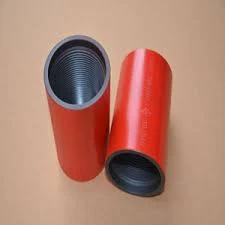- Afrikaans
- Albanian
- Amharic
- Arabic
- Armenian
- Azerbaijani
- Basque
- Belarusian
- Bengali
- Bosnian
- Bulgarian
- Catalan
- Cebuano
- Corsican
- Croatian
- Czech
- Danish
- Dutch
- English
- Esperanto
- Estonian
- Finnish
- French
- Frisian
- Galician
- Georgian
- German
- Greek
- Gujarati
- Haitian Creole
- hausa
- hawaiian
- Hebrew
- Hindi
- Miao
- Hungarian
- Icelandic
- igbo
- Indonesian
- irish
- Italian
- Japanese
- Javanese
- Kannada
- kazakh
- Khmer
- Rwandese
- Korean
- Kurdish
- Kyrgyz
- Lao
- Latin
- Latvian
- Lithuanian
- Luxembourgish
- Macedonian
- Malgashi
- Malay
- Malayalam
- Maltese
- Maori
- Marathi
- Mongolian
- Myanmar
- Nepali
- Norwegian
- Norwegian
- Occitan
- Pashto
- Persian
- Polish
- Portuguese
- Punjabi
- Romanian
- Russian
- Samoan
- Scottish Gaelic
- Serbian
- Sesotho
- Shona
- Sindhi
- Sinhala
- Slovak
- Slovenian
- Somali
- Spanish
- Sundanese
- Swahili
- Swedish
- Tagalog
- Tajik
- Tamil
- Tatar
- Telugu
- Thai
- Turkish
- Turkmen
- Ukrainian
- Urdu
- Uighur
- Uzbek
- Vietnamese
- Welsh
- Bantu
- Yiddish
- Yoruba
- Zulu
Understanding the Role of Seating Nipples in Tubing Applications for Optimal Performance
Understanding the Importance of Seating Nipple in Tubing A Comprehensive Guide
In the realm of petroleum engineering and drilling operations, the term seating nipple refers to a specialized component that plays a critical role in the functionality and safety of tubing systems. Designed to securely hold and seal various downhole tools, the seating nipple is essential for efficient fluid flow and the overall effectiveness of well completion. This article delves into the significance of seating nipples in tubing, their design, and their applications in modern drilling practices.
What is a Seating Nipple?
A seating nipple is a machined, tubular fitting installed within a section of tubing. It contains a specific profile or latch mechanism that allows other tools to be seated or hung off at a predetermined depth in the well. Often made from high-strength steel or similar materials, seating nipples must withstand the harsh downhole conditions, including high pressures and corrosive environments.
Design and Functionality
Seating nipples are meticulously engineered to provide a robust sealing mechanism. The internal geometry often features a shoulder or a recess designed to engage with the outer profile of various downhole tools, such as plugs, packers, or control valves. The primary function of the seating nipple is to create a reliable attachment point that ensures these tools remain securely in place during operations.
The nipple’s design also facilitates easy retrieval and deployment of downhole equipment. When it is time to remove or replace a tool, operators can utilize a retrieval tool that engages with the nipple, allowing for a safe and efficient disengagement.
Types of Seating Nipples
There are several types of seating nipples, each designed for specific applications and operational requirements
1. Standard Seating Nipples These are commonly used in a variety of well applications, providing straightforward attachment points for downhole tools. 2. Packer Seating Nipples Specifically designed for packers, which are devices used to isolate sections of the well, these nipples allow for the effective deployment and retrieval of packers during well completion and workover operations.
seating nipple in tubing

3. Retrievable Seating Nipples These are engineered for situations where tools may need to be removed and reused multiple times. They provide a reliable seal while allowing for easy retrieval.
4. Plug Seating Nipples Used for multi-stage fracturing operations, these nipples enable the placement of plugs at varying depths in the wellbore.
Applications in Drilling Operations
Seating nipples are indispensable in numerous phases of drilling and completion operations. In particular, they are essential for
- Well Isolation By anchoring packers, seating nipples help isolate different sections of the well, which is crucial for enhancing reservoir pressure management and maximizing hydrocarbon recovery.
- Pressure Control Seating nipples play a vital role in maintaining well integrity under varied pressure conditions. They ensure that tools can function without leakage or failure, which is critical in avoiding blowouts.
- Facilitating Maintenance During workover operations, seating nipples enable operators to easily access and replace malfunctioning equipment, thereby minimizing downtime and increasing efficiency.
Conclusion
In summary, seating nipples are vital components in the tubing systems used in oil and gas extraction. Their design, functionality, and ability to provide secure attachment points for downhole tools make them indispensable for safe and effective drilling operations. As the industry continues to evolve with advancing technologies and techniques, the importance of seating nipples remains unwavering, underscoring their integral role in the pursuit of efficient and sustainable energy production. By understanding their function and applications, operators can ensure optimal performance and longevity of their well systems.
-
Tubing Pup Joints: Essential Components for Oil and Gas OperationsNewsJul.10,2025
-
Pup Joints: Essential Components for Reliable Drilling OperationsNewsJul.10,2025
-
Pipe Couplings: Connecting Your World EfficientlyNewsJul.10,2025
-
Mastering Oilfield Operations with Quality Tubing and CasingNewsJul.10,2025
-
High-Quality Casing Couplings for Every NeedNewsJul.10,2025
-
Boost Your Drilling Efficiency with Premium Crossover Tools & Seating NipplesNewsJul.10,2025







